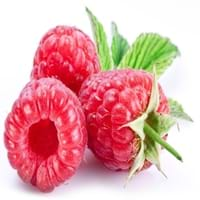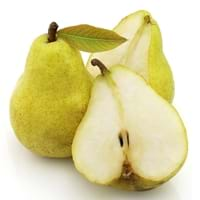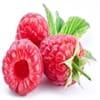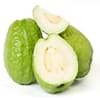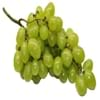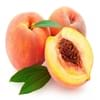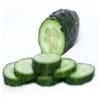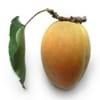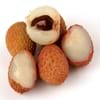रास्पबेरी और नाशपाती
लाभ
स्वास्थ्य सुविधाएं
कैंसर की रोकथाम, हार्ट को स्वस्थ्य रखता है, धब्बेदार अध: पतन रोकता, रक्त परिसंचरण समस्याओं को कम कर देता है
गठिया की रोकथाम, कैंसर की रोकथाम, गठिया उपचार, हार्ट को स्वस्थ्य रखता है
सामान्य लाभ
सूजन को काम करने के लिए, रक्त शर्करा के स्तर को नियंत्रित करता है, पाचन सहायता, आंख की देखभाल, वजन घटाने में मदद करता
सूजन को काम करने के लिए, प्रतिरक्षा प्रणाली को बढ़ा देता है, रक्तचाप को नियंत्रित करता है, रक्त शर्करा के स्तर को नियंत्रित करता है, बुखार मे मदद करता है, पाचन सहायता, गले में खराश का उपचार
त्वचा पे लाभ
बुढ़ापे मै लाभ, रंग हल्का कर देता है
झुर्रियों को कम कर देता है, मुँहासे के इलाज
बालों पे लाभ
मॉइस्चराइजर के रूप में उपयोग, बालों का बड़ना नियंत्रित करता है, चमकदार बाल
स्वस्थ बालों को बढ़ावा देता है, चमकदार बाल
एलर्जी
एलर्जी के लक्षण
साँस लेने में कठिनाई, खुजली, हीव्स, खुजली, नाक बंद, बहती नाक, छींक आना, गीली आखें, घरघराहट
तीव्रग्राहिता, कब्ज़ की शिकायत, खुजली, त्वचा के चकत्ते, सूजन
दुष्प्रभाव
एलर्जी की प्रतिक्रिया
एलर्जी की प्रतिक्रिया
उपयुक्त है
गर्भवती महिला
Yes
Yes
स्तनपान कराने वाली महिलाएं
Yes
Yes
खाने का अच्छा समय
नाश्ता (या खाली पेट) के रूप में लिए जाने के लिए उपयुक्त, दोपहर में एक नाश्ते के रूप में, भोजन के बाद ना खाए, सुबह के समय (दोपहर का भोजन करने से पहले)
दोपहर में एक नाश्ते के रूप में, रात में सोने से पहले और उपभोग ना करें, ताजा खाने के लिए, किसी भी अन्य खाद्य पदार्थों के साथ मिश्रण से बचने, भोजन के बाद ना खाए, सुबह के समय (दोपहर का भोजन करने से पहले)
पोषण
सेवन मात्रा
१०० ग्राम
१०० ग्राम
कार्बोहाइड्रेट
11.94 ग्राम
99+
15.23 ग्राम
26
रेशा
6.50 ग्राम
6
3.10 ग्राम
19
चीनी
4.42 ग्राम
99+
9.75 ग्राम
24
प्रोटीन
1.20 ग्राम
19
0.36 ग्राम
99+
कार्बोहाइड्रेट मे अनुपात में प्रोटीन
0.10
15
0.03
25
विटामिन
विटामिन ए (रेट्नोल)
2.00 माइक्रोग्राम
33
1.00 माइक्रोग्राम
36
विटामिन बी 1 (थायमिन)
0.03 मिलीग्राम
30
0.01 मिलीग्राम
99+
विटामिन बी 2 (राइबोफ्लेविन)
0.04 मिलीग्राम
24
0.03 मिलीग्राम
33
विटामिन बी 3 (नियासिन)
0.60 मिलीग्राम
26
0.16 मिलीग्राम
99+
विटामिन बी 5 (पैंटोथैनिक एसिड)
0.33 मिलीग्राम
11
0.05 मिलीग्राम
99+
विटामिन बी -6 (पाइरियोडॉक्सिन)
0.06 मिलीग्राम
32
0.03 मिलीग्राम
99+
विटामिन B9 (फोलिक एसिड)
21.00 माइक्रोग्राम
13
7.00 माइक्रोग्राम
28
विटामिन सी (एस्कॉर्बिक एसिड)
26.20 मिलीग्राम
35
4.30 मिलीग्राम
99+
विटामिन ई (टोकोफेरोल)
0.87 मिलीग्राम
12
0.12 मिलीग्राम
35
विटामिन (फ़्यल्लोचिनोने)
7.80 माइक्रोग्राम
10
4.40 माइक्रोग्राम
16
लाइकोपीन
0.00 माइक्रोग्राम
9
0.00 माइक्रोग्राम
9
ल्यूटिन और ज़ेआक्शंतहीं
136.00 माइक्रोग्राम
7
44.00 माइक्रोग्राम
23
चोलिने
12.30 माइक्रोग्राम
3
5.10 माइक्रोग्राम
24
वसा
0.65 ग्राम
12
0.14 ग्राम
39
खनिज पदार्थ
पोटैशियम
151.00 मिलीग्राम
99+
116.00 मिलीग्राम
99+
लोहा
0.69 मिलीग्राम
18
0.18 मिलीग्राम
99+
सोडियम
1.00 मिलीग्राम
20
1.00 मिलीग्राम
20
कैल्शियम
25.00 मिलीग्राम
18
9.00 मिलीग्राम
35
मैग्नीशियम
22.00 मिलीग्राम
11
7.00 मिलीग्राम
28
जस्ता
0.42 मिलीग्राम
6
0.10 मिलीग्राम
23
फास्फोरस
29.00 मिलीग्राम
18
12.00 मिलीग्राम
34
मैंगनीज
0.67 मिलीग्राम
5
0.05 मिलीग्राम
99+
तांबा
0.09 मिलीग्राम
24
0.08 मिलीग्राम
27
सेलेनियम
0.20 माइक्रोग्राम
15
0.10 माइक्रोग्राम
16
वसायुक्त अम्ल
ओमेगा -3s
126.00 मिलीग्राम
5
1.00 मिलीग्राम
37
ओमेगा 6s
249.00 मिलीग्राम
7
93.00 मिलीग्राम
20
स्टेरोल
फीटोस्टेरोल
उपलब्ध नहीं है
8.00 मिलीग्राम
10
पानी की मात्रा
85.75 ग्राम
35
83.96 ग्राम
99+
राख
0.46 ग्राम
29
0.32 ग्राम
37
कैलोरी
आहार की मात्रा
१०० ग्राम
१०० ग्राम
छिलका के साथ ताजा फल में कैलोरी
53.00 किलो कैलोरी
21
57.00 किलो कैलोरी
19
छिलका के बिना ताजा फल में कैलोरी
उपलब्ध नहीं है
उपलब्ध नहीं है
जमे हुए फार्म में कैलोरी
52.00 किलो कैलोरी
13
उपलब्ध नहीं है
सूखे रूप में कैलोरी
363.00 किलो कैलोरी
9
उपलब्ध नहीं है
डिब्बाबंद रूप में कैलोरी
91.00 किलो कैलोरी
8
उपलब्ध नहीं है
खानो मैं कैलोरी
रस में कैलोरी
68.00 किलो कैलोरी
18
65.00 किलो कैलोरी
19
जाम में कैलोरी
150.00 किलो कैलोरी
33
240.00 किलो कैलोरी
21
पाई में कैलोरी
169.00 किलो कैलोरी
99+
282.00 किलो कैलोरी
27
विशेषताएँ
प्रकार
बेरी
पेड़
परिपक्व ऋतु
गर्मी
पतझड़, गर्मी, सर्दी
किस्मों
आमिटी, ऑगस्ट रेड, बाय्न, कंबी, केरोलाइन, कॉमेट, दीनकुम, डॉर्मन रेड, लॅतम, मीकेर, ब्लॅक हॉक, हयदा, लॉरन, मीकेर और लॅतम
ग्रीन अंजोवौ, रेड अंजोवौ, बार्टलेट, रेड बार्टलेट, बॉस्क, कोमिसे, कॉंकुर्ड, फोरेल्ले, सेककेल और स्टरकरिंसों
बीजरहित वैराइटी
No
Yes
रंग
काली, बैंगनी, लाल, पीला
पीला
अंदर का रंग
गुलाबी
सफेद
आकार
चोटीदार
नाशपाती
बनावट
रसीला
दानेदार
स्वाद
मीठा
कुरकुरे, मीठा
मूल देश
यूरोप, उत्तरी एशिया
चीन, जापान
पर बढ़ता है
पेड़
पेड़
खेती
मिट्टी के प्रकार
रेतीली दोमट
मिट्टी का, चिकनी बलुई मिट्टी का, बलुआ
मृदा पीएच
5.8-6.5
5-7.5
वातावरण की परिस्थितियाँ
सर्दी
सर्दी, गरम, तुषार के बिना
तथ्य
के बारे में तथ्य
- रसभरी (रास्पबेरी) के पौधे दो प्रकार के होते हैं।
- बाजार में आज इसका जैम एक लोकप्रिय उत्पाद के रूप में प्रयोग में लाया जा रहा है।
- इसकी २०० से ज्यादा प्रजातियां हैं।
- पहला नाशपाती के पेड़ 1620 में उत्तरी अमेरिका में लगाया गया था।
- यह फल प्राचीन ग्रीस में मतली के खिलाफ एक प्राकृतिक उपाय के रूप में इस्तेमाल किया गया था।
मादक पेय पदार्थों में
वाइन
Yes
Yes
बीयर
Yes
Yes
स्पिरिट्स
Yes
Yes
कॉकटेल
Yes
Yes
उत्पादन
शीर्ष निर्माता
रूस
चीन
दूसरे देश
आज़रबाइजान, कनाडा, मेक्सिको, पोलैंड, सर्बिया, स्पेन, यूक्रेन, यूनाइटेड किंगडम, संयुक्त राज्य अमेरिका
अर्जेंटीना, बेल्जियम, भारत, इटली, जापान, दक्षिण अफ्रीका, स्पेन, तुर्की, संयुक्त राज्य अमेरिका
शीर्ष आयातक
संयुक्त राज्य अमेरिका
यूरोप
शीर्ष निर्यातक
पोलैंड
चीन
वैज्ञानिक नाम
वानस्पतिक नाम
रुबूस इडाइअस
पयरस कंम्युनिस
पर्याय
उपलब्ध नहीं है
उपलब्ध नहीं है
श्रेणीविभाजन
डोमेन
यूकेरिया
यूकेरिया
राज्य
प्लाटै
प्लाटै
सुबकिंगडॉम
त्रचेओबेइन्ता
त्रचेओबेइन्ता
विभाजन
माग्नोलियोफायत
माग्नोलियोफायत
क्लास
मग्नोलियोप्सिडा
मग्नोलियोप्सिडा
उपश्रेणी
रोसइदै
रोसइदै
ऑर्डर
रोसलेस
रोसलेस
फॅमिली
रोसासए
रोसासए
जाति
रूबस
पयरस
प्रजाति
र. इडाइअस
प. कम्युनिस
जेनेरिक ग्रुप
गुलाब का फूल
गुलाब का फूल
|
||
|
||
|
